Tom's Guide Verdict
The Keychron K11 Max is a wireless ergonomic keyboard that offers a comfortable typing experience thanks to its Alice layout, plus it’s hot-swappable with a premium construction which make it a winner. That said, its finicky companion software and loose feet might turn you off.
Pros
- +
Premium construction
- +
Light and portable
- +
Comfortable for long hours
- +
Superb typing experience and sound
- +
Customizable to your liking
Cons
- -
Loose feet
- -
Unpolished companion software
- -
No dongle storage
- -
Steep learning curve
Why you can trust Tom's Guide
Price: Starts at $94
Switches: Low profile gateron mechanical brown or red
Layout: 65% Alice, 68 keys
Operating system: macOS, Windows
Backlighting: White, RGB
Paired devices max: 3
Connectivity: Bluetooth 5.1, 2.4GHz dongle, USB-C
Measurements: 13.62 x 4.52 x 1.14 inches (346 x 115 x 29mm)
Weight: 18.34 ounces (520g)
Colors: Black
If you’re like me and spend your working week in front of a computer, you’ve probably experienced some form of wrist pain, especially if you don’t own one of the best ergonomic keyboards. Bad practices can lead to repetitive strain injuries (RSI), so it’s crucial to make your work setup as comfortable as possible. And if you want to upgrade to an ergonomic keyboard, look no further than the Keychron K11 Max.
The K11 Max is a great wireless ergonomic keyboard that feels both premium and sturdy. The learning curve might be steep because of the 65% Alice layout, which angles and tilts the keys in the middle of the keyboard to better fit your hands, but the typing experience is excellent. In my testing, I experienced no pain in my hands or wrists, and now I don’t want to go back to a regular keyboard. It’s a far superior ergo keyboard to the Kinesis Freestyle Pro (a $179 keyboard I tested and hated) and comes at a cheaper price. But that doesn’t mean the K11 Max is perfect.
For all the deets, read our full Keychron K11 Max review.
Keychron K11 Max review: Cheat sheet
- What is it? A wireless 65% Alice layout ergonomic keyboard with 68 keys and either white or RGB lighting
- Who is it for? People who spend long hours typing and want a comfortable ergonomic keyboard
- How much does it cost? The K11 Max starts at $94 / £94 from Keychron only
- Anything wrong? Janky companion software, loose feet, and no onboard dongle storage
Keychron K11 Max review: The ups
The Keychron K11 Max is for people who sit at desks for long periods of time. It’s built really well while maintaining a small design, offers a superb typing experience, and most importantly, is ergonomic and comfortable.
Premium construction and design
Much like the other Keychron keyboards we’ve tested, the K11 Max is built really well. Its case is made of aluminum. Compatible with both macOS and Windows, there’s a small switch at the back that lets you toggle between either layout — really useful if you work across both systems. There are no separate function keys as it’s a sub-75% layout keyboard, so you’ll need to hold down the Fn key and tap the number keys to trigger your usual function commands. Overall, the K11 Max is a well-designed keyboard.
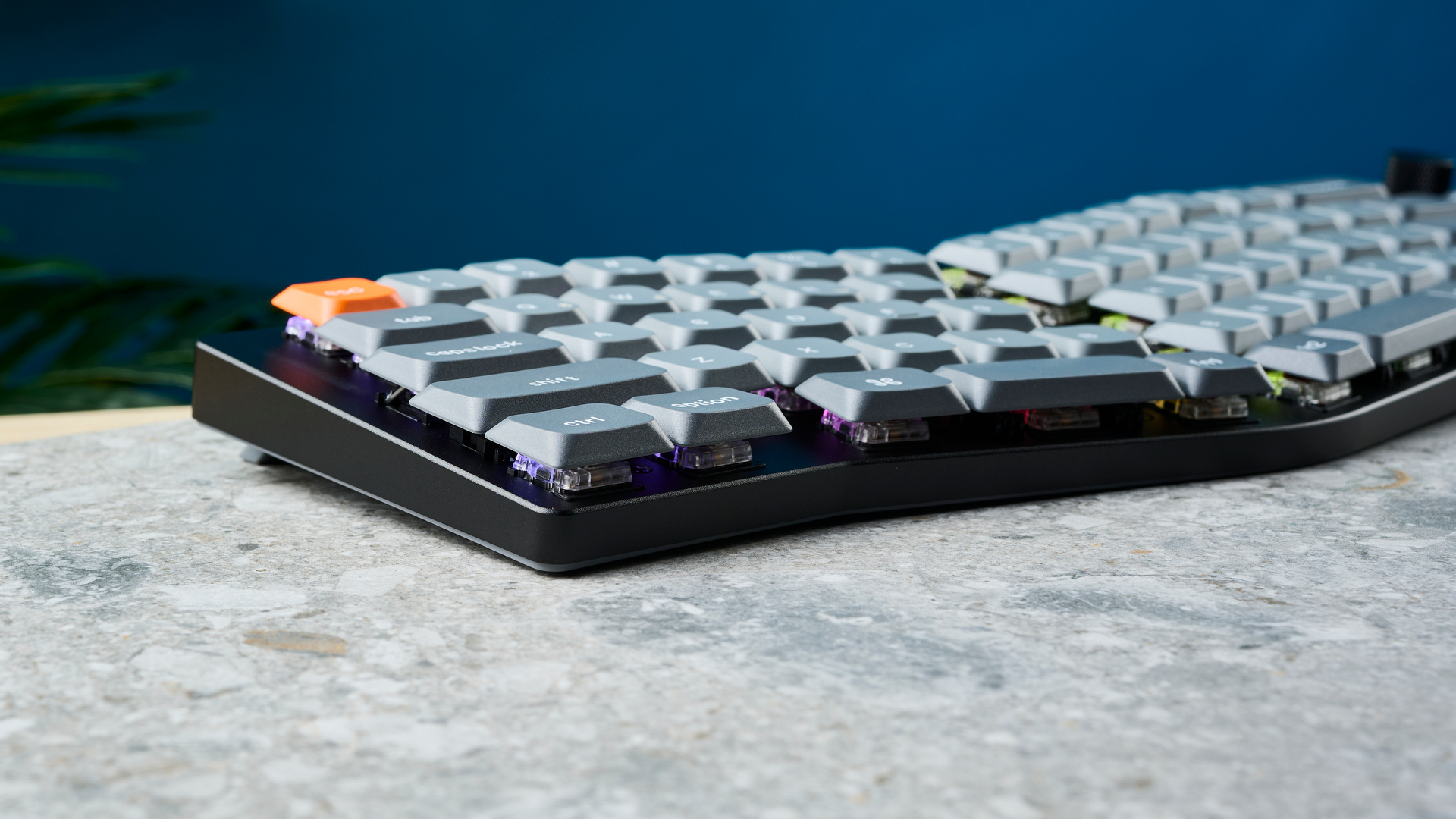
The first thought that popped into my head upon seeing the K11 Max was, “This is so light.” It’s highly portable at only 18.34 ounces, so I could stash it into my bag and barely feel the weight on my shoulders. It’s the antithesis of the huge 85 ounce Keychron Q6. Measuring 13.62 x 4.52 x 1.14 inches, Keychron claims it’s “one of the thinnest wireless mechanical keyboards in the world”. There are thinner keyboards out there, such as the Logitech G915 ($250) which is just 0.86 inches high, but the K11 Max is still slimmer than the Logitech Ergo K860 ($129).
Comfort over all
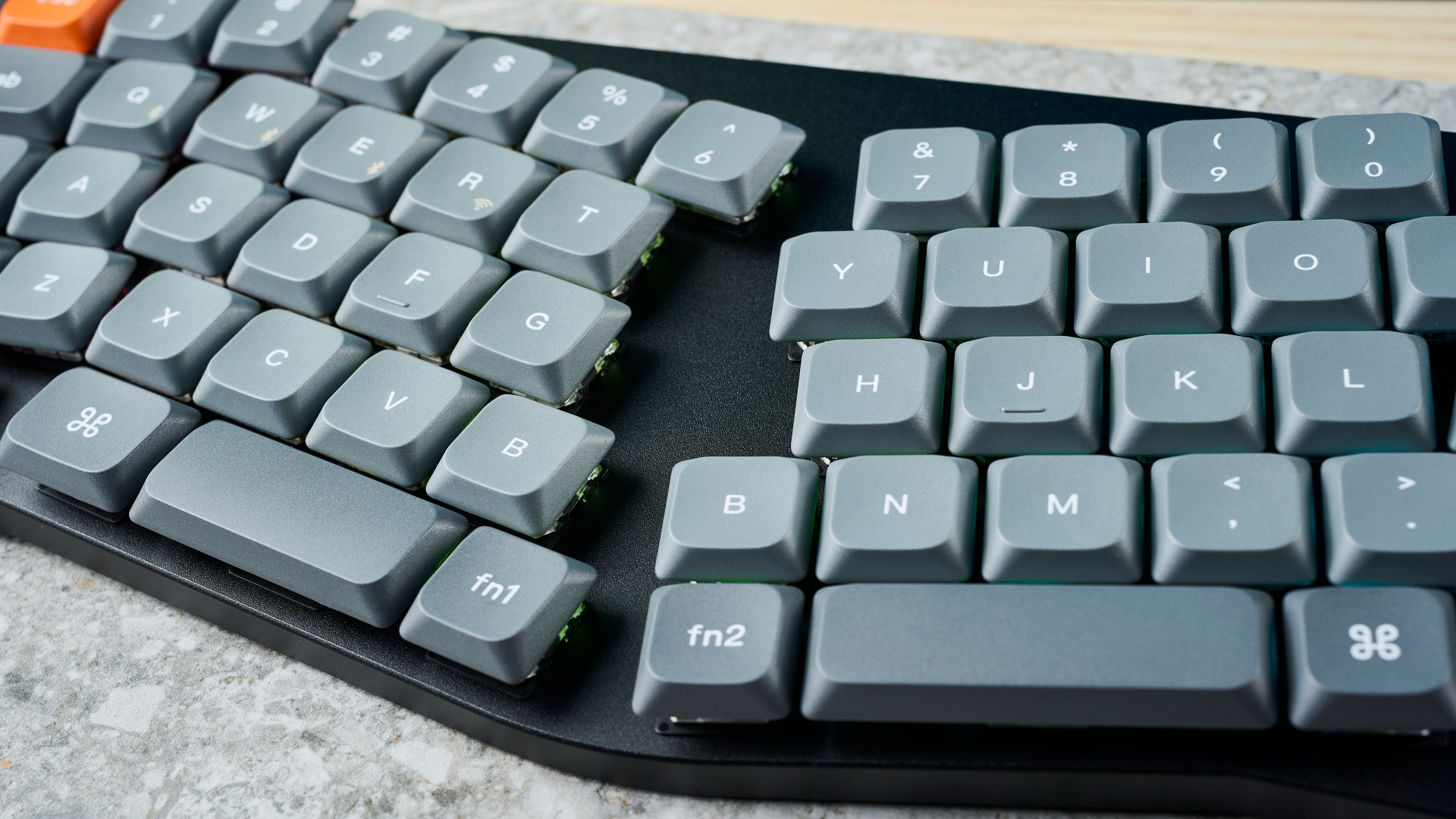
The Keychron K11 Max doesn’t look like your usual keyboard. It follows the Alice layout which is split and slightly tilted for added comfort. It’s meant to be handy for those suffering from wrist pain or repetitive strain injuries (RSI). With regular keyboards, you need to bend your wrists to type — the closer the keyboard to your body, the more the bend. Over time, this can stress out your wrists and hands. The K11 Max addresses this issue by naturally bending your wrists. It’s the most comfortable keyboard I’ve used yet, and I didn’t experience any pain in my wrists after using it for eight consecutive hours.
Get instant access to breaking news, the hottest reviews, great deals and helpful tips.
Typing experience
The Keychron K11 Max’s low profile switches and keycaps are so comfortable to type on that I now prefer them both over their standard profile counterparts. The board’s Gateron MX 2.0 Low Profile switches are 35%-40% shorter than conventional normal profile switches, according to Keychron. For instance, a standard Gateron red switch has a 4mm actuation point, while a low profile Gateron brown switch has a 3mm actuation point. Low profile switches are faster and easier to activate.

Then there are low profile keycaps, which are slimmer than normal profile ones. Given the design, low profile keyboards are more ergonomically friendly as you don't need to raise your wrist to type.
It took me a while to get used to typing on an Alice layout as I’m used to regular keyboards (more on this later), but once I did, the typing experience was stellar, and my score rivaled other keyboards I’ve tested. The keyboard’s double-shot PBT keycaps feel really good under your fingertips, and they’re oil resistant so the colors will stay true to life over time.
| Keyboard | Type test speed (WPM) | Type test accuracy |
|---|---|---|
| Ducky One 3 TKL | 83 | 94.09% |
| MelGeek CYBER01 | 83 | 92.02% |
| Keychron V1 | 81 | 92.06% |
| Asus ROG Strix Scope II 96 | 81 | 96.22% |
| Keychron K11 Max | 72 | 92.08% |
| Nikita’s rolling averages (all keyboards) | 75.1 | 91.8% |
I took a typing test on 10fastfingers.com, and you can see the results above.
Music to my ears
I usually love the clickity clackity sounds created by clicky switches. Contrary to that, I enjoyed using the red (linear) switches that came with the Keychron V1, and I think the K11 Max might have just converted me into a quiet-typing fan. I tested the low profile Gateron brown switches and was pleased with how they sounded. They are tactile switches, meaning they provide physical feedback while typing, but they aren’t as loud as clicky blue tactile switches. The sound was just the right volume and my typing didn’t disturb anyone in the office.

Inside the K11 Max is an acoustic foam which offers a dampened or fuller sound when you type, regardless of switches. If brown switches aren’t for you, the K11 Max is hot-swappable, so you can replace the switches without worrying about de- and re-soldering them to the PCB, thereby customizing the switch sound to your liking.
Configuration and customization
From the get go, the Keychron K11 Max can be configured to your liking. You can choose from three variations: with white backlight ($94), RGB backlight ($104), and hot-swappable RGB backlight ($114). You can then choose from blue, red or brown low profile Gateron switches, and even spec a handy travel pouch. Unlike the Keychron V1, you can’t get a barebones version of the K11 Max for modding purposes, and the metallic knob in the top right corner is present on every variation of the K11 Max.
Keychron K11 Max review: The downs
From loose feet and no onboard dongle storage to janky companion software, the Keychron K11 Max is far from a perfect keyboard — even though I’d really like it to be.
Feet, don’t fail me now
While the Keychon K11 Max is generally built well and I’ve fawned over its premium construction, this sadly doesn’t apply to the keyboard’s feet. On its underside, there are four rubber feet to prop up the keyboard at two different angles. But the rubber lips aren’t enough to keep the K11 Max in place. During my testing, I knocked the keyboard twice on accident, hitting my laptop and also nearly spilling my coffee!
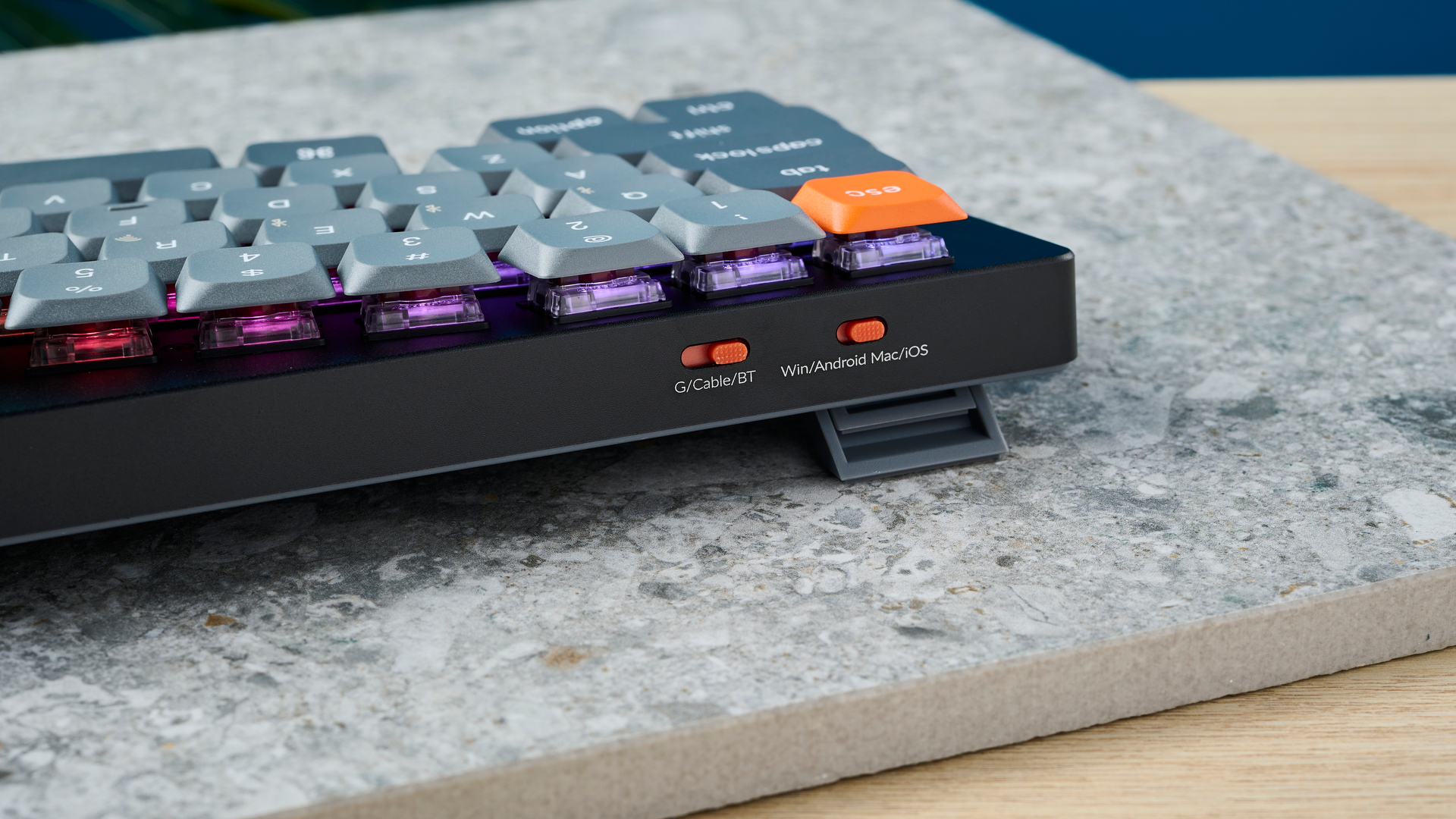
Both feet seem a little loose too, and it doesn’t feel like the same amount of consideration went into building them as the rest of the board. Compared to the Keychon V1 — my favorite keyboard — the Epomaker TH80 Pro, and the NuPhy Air75 V2 (its feet are designed to go over MacBook keyboards), the K11 Max falls short.
Unpolished companion software

Keychron doesn’t have its own proprietary software for its keyboards, so you need to use the VIA web app on Google Chrome. At the time of writing, the product page for the K11 Max said, “Since the VIA code for the K11 Max version is still awaiting approval from Github, it is not yet automatically recognized.” So you have to download a keymap JSON file from the webpage. I did that, dragged the file into the Design tab (which you need to toggle in the Settings tab), and it recognized my K11 Max.
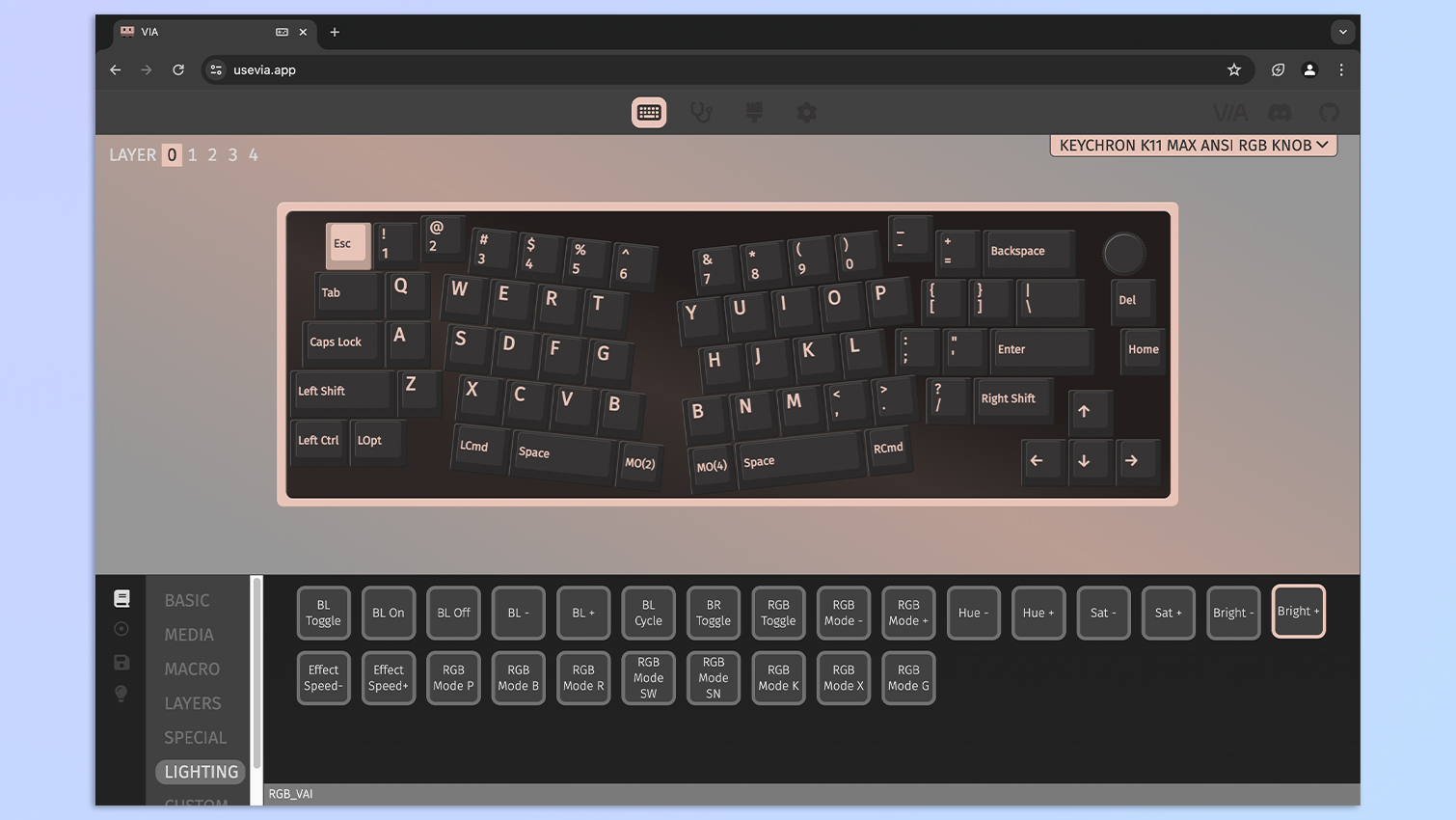
It was all going so well until I couldn’t customize the RGB lighting via Via. Clicking on the brightness, saturation and other buttons yielded no results. I didn’t have this problem with the Keychron V1 but Reviews Editor Peter Wolinski encountered the same error when he was testing the Keychron V6. Similarly, while you can change what the metallic knob does in theory, I couldn’t remap it to do anything other than change the volume.
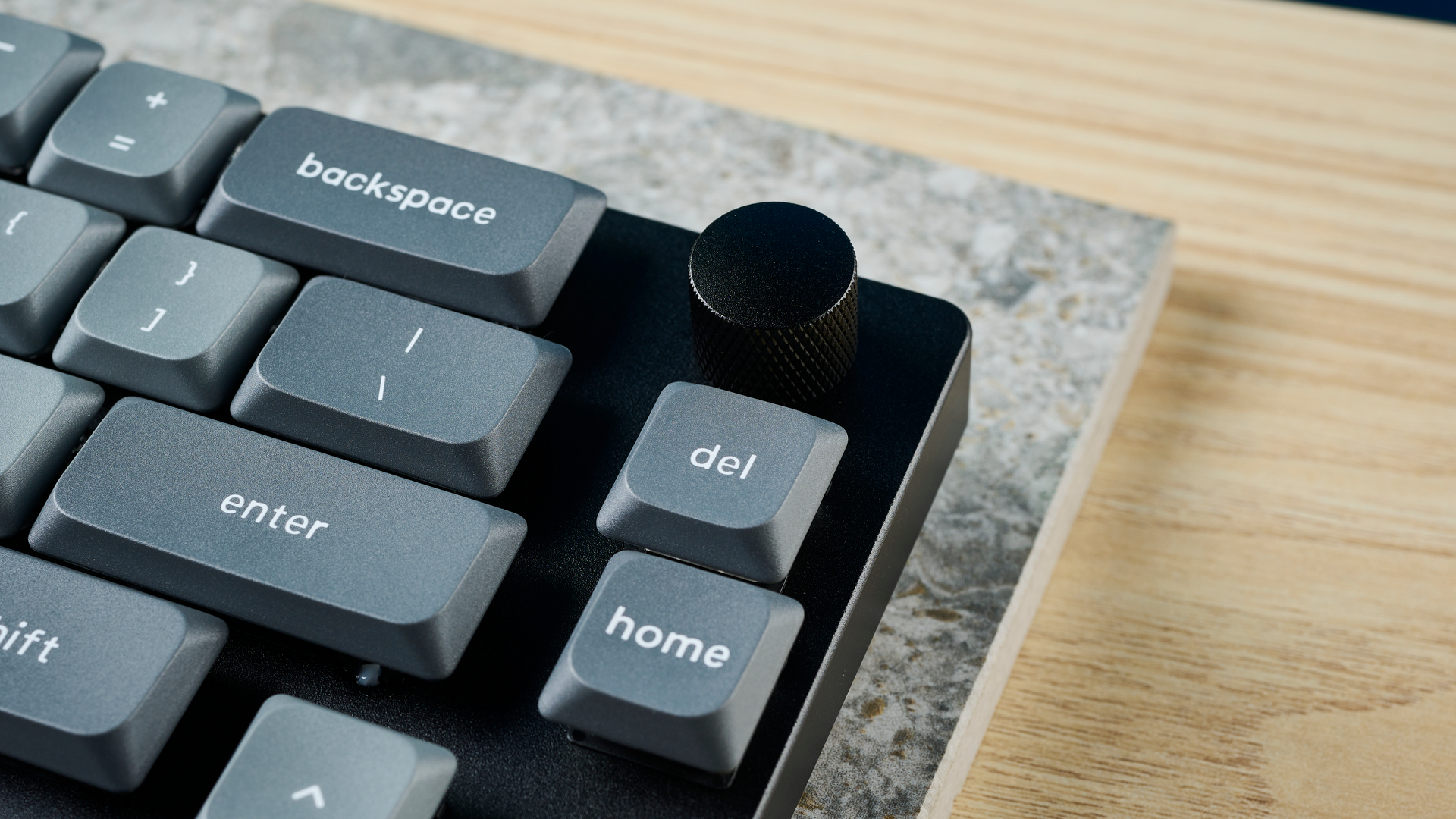
You can still use key combos to cycle through RGB modes, but it would be nice to be able to at least fine-tune the hue and saturation which can be done only by using the companion software. After all, the keyboard starts at $94. I should be able to utilize all of its features.
No onboard dongle storage
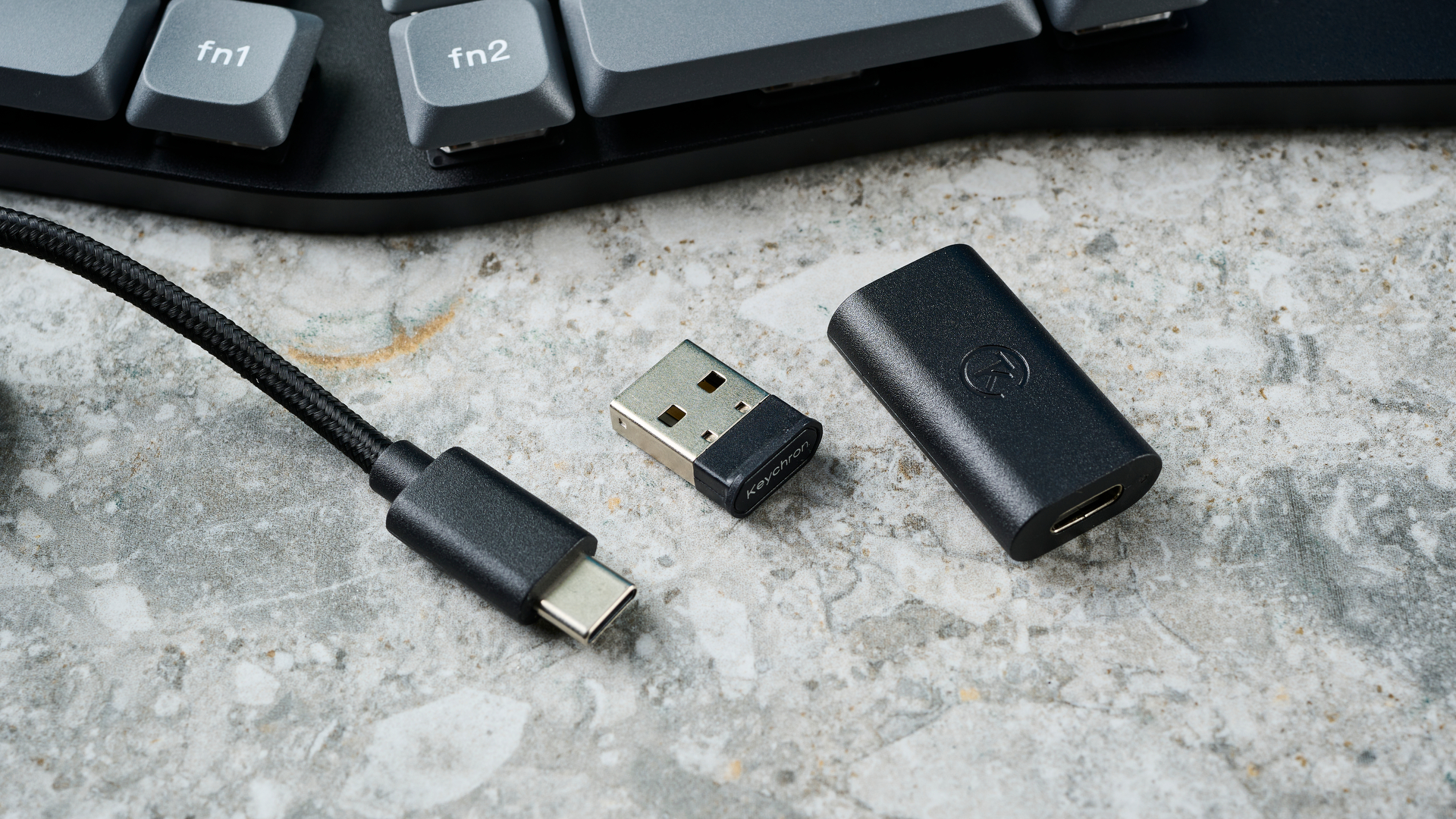
The Keychron K11 Max provides you with three modes of connectivity: wireless via Bluetooth or its 2.4GHz dongle, and wired via a braided cable. However, there is no onboard storage for the dongle — like on the Epomaker TH80 Pro ($99) — and it’s a small dongle so you need to be careful lest you lose it. This is probably for space- or cost-saving reasons, but it would have been handy to slot the dongle into the K11 Max itself.
Steep learning curve
This isn’t exactly a con, but more of a piece of advice. The Keychron K11 Max has a steep learning curve, especially if this is your first time using a keyboard in this design. I’m adept at touch typing but I got off to a rocky start with this keyboard, and it took me just under 10 hours to get used to it. For context, here are my 10fastfingers.com typing test results:
| Keyboard | Type test speed (WPM) | Type test accuracy |
|---|---|---|
| Keychron K11 Max (1 hour) | 34 | 78.9% |
| Keychron K11 Max (2 hours) | 51 | 84.49% |
| Keychron K11 Max (4 hours) | 57 | 91.09% |
| Keychron K11 Max (9 hours) | 72 | 92.08% |
Once you’re accustomed with the K11 Max, it offers a superb typing experience. It can feel like an uphill trek, but if you’re on the hunt for a good ergonomic keyboard, don’t let this put you off.
Keychron K11 Max review: Verdict
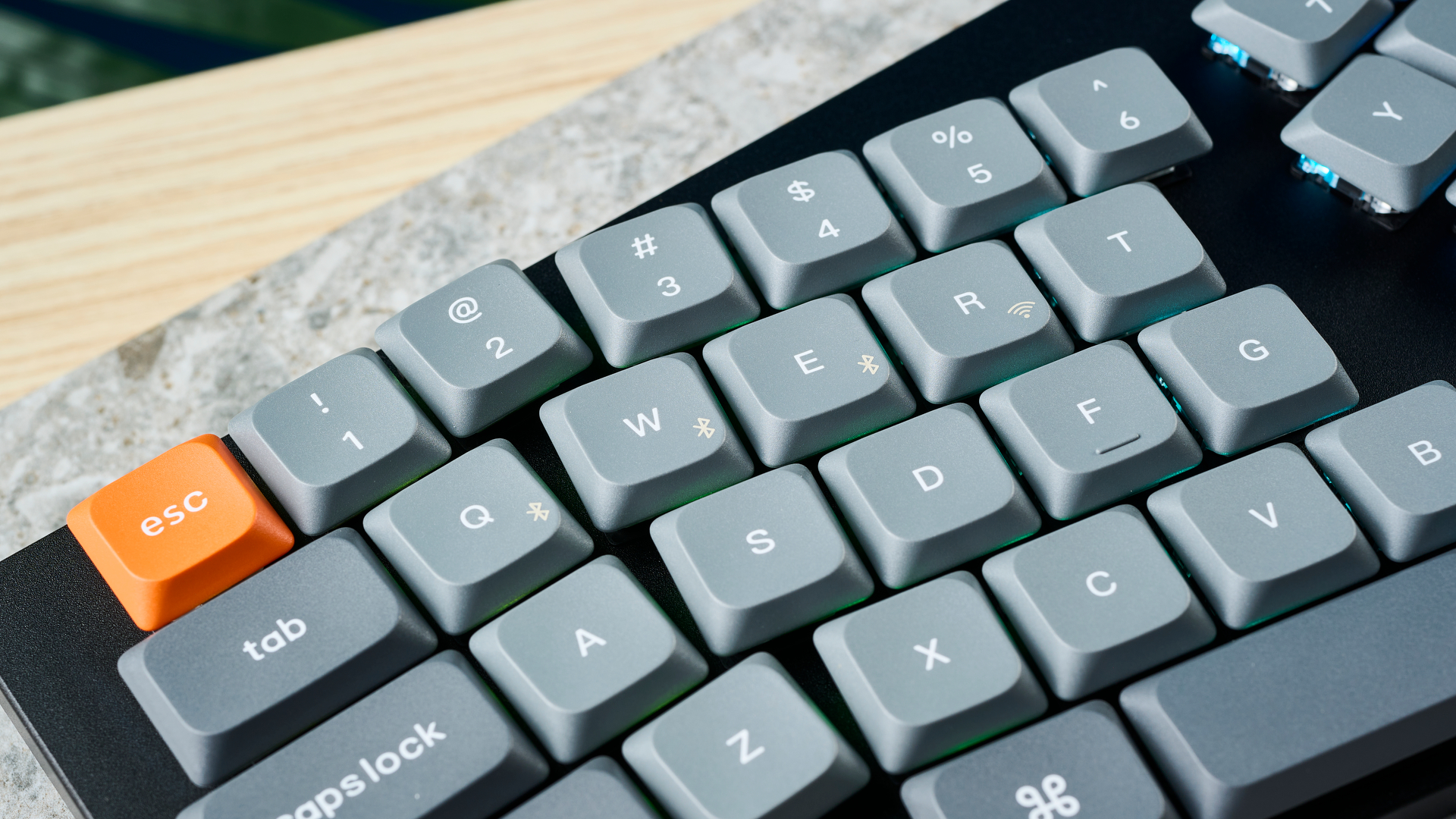
Having tested the Keychron K11 Max, I don’t want to go back to a regular keyboard. Its 65% Alice layout makes typing for long hours comfortable, and though it takes a while to get used to the design, it offers an outstanding typing experience. Like most Keychron keyboards we’ve tested at Tom’s Guide, the K11 Max is built to last with its double-shot PBT keycaps and aluminum frame.
However, there are a few issues that let down this otherwise fantastic board. Its feet feel loose and not as sturdy as the ones on the Keychron V1 or the Logitech Ergo K860. And while its two wireless connectivity options are handy, you can’t slot the dongle into the keyboard itself like you can on the Epomaker TH80 Pro. Its companion software isn’t polished either as I was unable to remap the metallic knob. Also, while you can use key combos to cycle through RGB effects, you need its companion software to change the lighting’s hue and saturation — which doesn’t work.
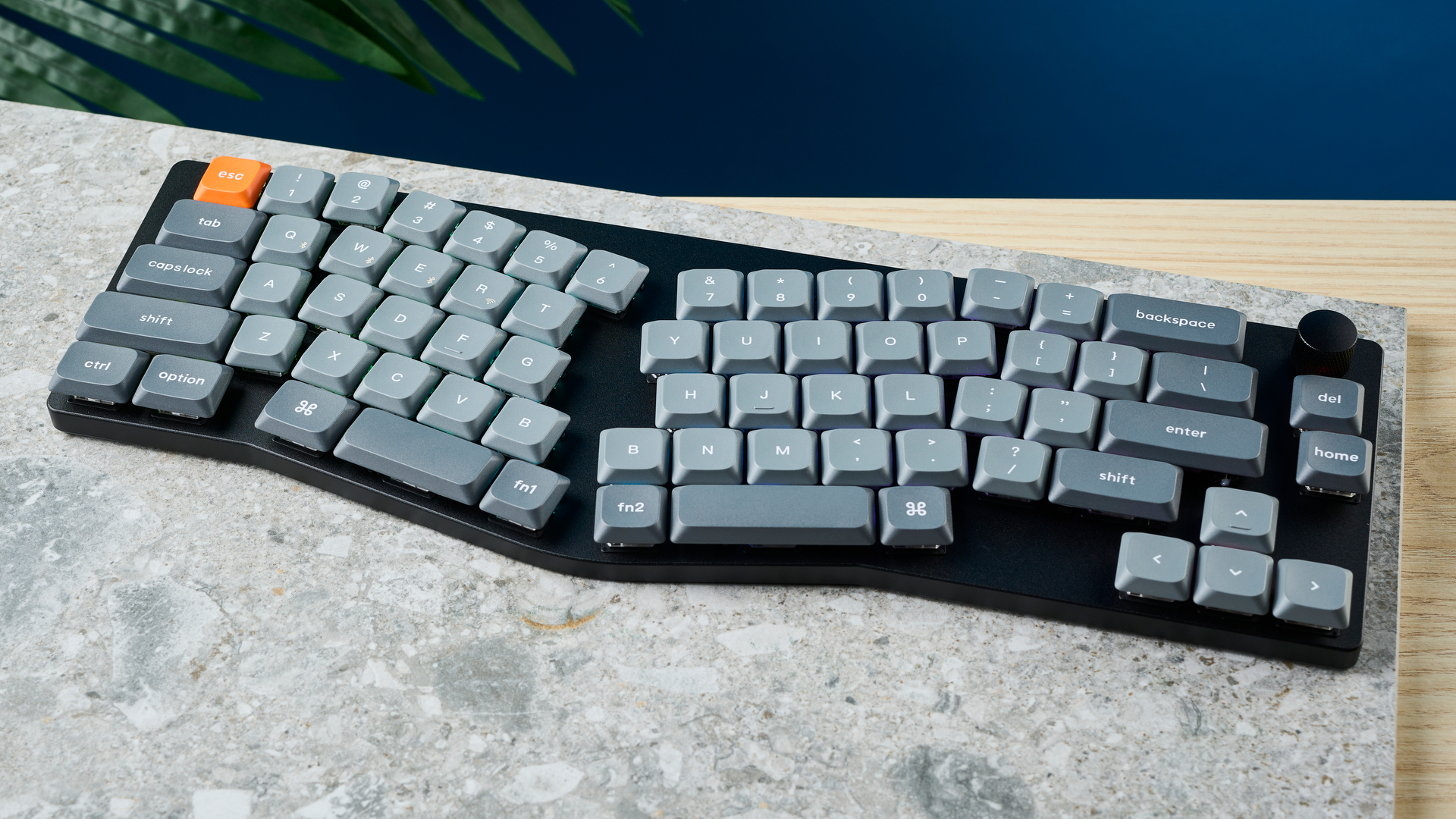
The K11 Max is still a great keyboard, and if you’re willing to overlook its flaws and just want a board for maximum comfort and typing capabilities, it’s well worth the money. Pair it with the best ergonomic mouse and you’ll have a winner on your hands.

Nikita is a Senior Writer on the Reviews team at Tom's Guide. She's a lifelong gaming and photography enthusiast, always on the lookout for the latest tech. Having worked as a Sub Editor and Writer for Canon EMEA, she has interviewed photographers from all over the world and working in different genres. When she’s not working, Nikita can usually be found sinking hours into RPGs on her PS5, flying a drone (she's a licensed drone pilot), at a concert, or watching F1. Her work has appeared in several publications including Motor Sport Magazine, NME, Marriott Bonvoy, The Independent, and Metro. You can follow her photography account on Instagram here.

